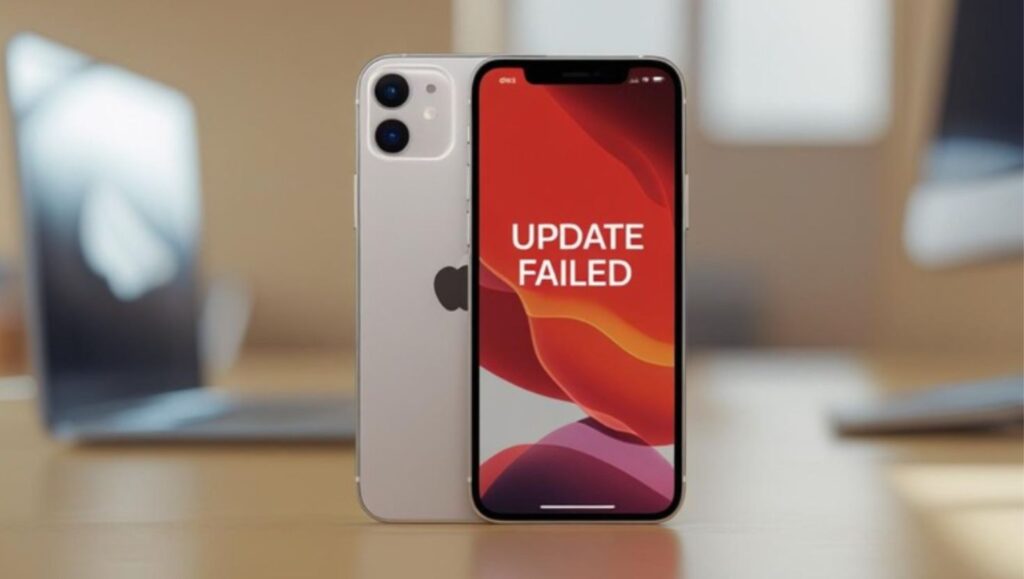Seeing the “Software Update Failed” message on your iPhone can be frustrating, especially when you are looking forward to new features and improvements. iOS updates are essential for keeping your device secure, running smoothly, and packed with the latest enhancements. However, problems like weak Wi-Fi, low storage space, or a battery that is not sufficiently charged can stop the update in its tracks.
In this guide, you will learn exactly why iPhone software updates fail and the proven solutions to fix them quickly.
The good news is, you don’t have to panic. These problems are easy to fix, and once you take care of them, you should be able to get your iPhone updated without any trouble.
Why Does the Software Update Failure Occur on iPhone?
A failed iOS update can happen for several simple reasons, most of which are easy to identify and fix. The most common causes include:
- Poor or unstable internet connection: An update requires a consistent connection, and weak Wi-Fi can cause it to fail midway.
- Low storage space: If your iPhone does not have at least 4 to 6 GB of free space, the update package will not install.
- Low battery: Updating with less than 50 percent battery can trigger an automatic failure unless the device is charging.
- Corrupted update file: If the downloaded iOS update is incomplete or damaged, the process will not continue.
- VPN or network restrictions: Certain network settings or VPN usage can interrupt communication with Apple’s servers.
Read: How to Disable Antivirus Software on MAC or iPhone
By knowing the causes, you can take preventive measures to ensure that your next update goes through without issues.
Software Update Failed on iPhone – How to Fix

Delete Old Update Files from Your iPhone
When an update fails, it doesn’t always clean up after itself. Those leftover update files can cause trouble the next time you try.
Step 1 – Open Settings on your iPhone, then go to:
General > iPhone Storage
Step 2 – Scroll through the list of apps and files. Keep an eye out for any large iOS update packages.
Step 3 – If you find one, delete it.
After that, restart your iPhone and try installing the update again.
Free Up Space on Your iPhone
iOS updates need room to breathe. You’ll usually need at least 4–6 GB of free space for the installation to succeed.
Step 1 – Open Settings, then head to: General > iPhone Storage
Step 2 – Check how much free space you have. If it’s less than required, start clearing things out.
Step 3 – Remove large files you no longer need or uninstall apps and games that are eating up space.
Once you have more than 10 GB free, try the update again. It should go through smoothly this time.
Update Using iTunes or Apple Devices
If you’ve tried more than twice and it still fails, skip the iPhone’s built-in updater and go through iTunes or Apple Devices instead.
Step 1 – Connect your iPhone to a MacBook or Windows PC/laptop.
Step 2 – On a MacBook, open Finder. On Windows, download and install the Apple Devices app from the Microsoft Store.
Step 3 – If your iPhone asks whether to trust the computer, tap Trust.
Step 4 – In iTunes or Apple Devices, select your iPhone from the left-hand panel.
Step 5 – Go to the General tab.
Step 6 – Click Check for Update and follow the prompts to complete the installation.
FAQs
1. Why does my iPhone say “Software update has failed”?
It’s usually because of an unstable Wi-Fi connection, low storage, or a corrupted update file. Sometimes VPNs or certain network settings can also interrupt the update.
2. Can I update my iPhone without Wi-Fi?
Yes, if you have an iPhone 11 or later and are running iOS 17 or newer, you can update using mobile data. But Wi-Fi is still the better choice for speed and reliability.
3. Does a failed iOS update erase my data?
No. A failed update won’t delete your files or apps. Still, it’s smart to back up your iPhone before updating, especially if you’re installing a beta version.
Last Words
Running into a “Software Update Failed” error on your iPhone can be annoying, but it’s rarely a sign of anything serious. Most of the time, it comes down to simple issues like storage space, internet stability, or battery level. By deleting old update files, freeing up space, or using iTunes or Apple Devices for the installation, you can usually get things back on track in just a few minutes.
Once the update is complete, your iPhone will be ready with the latest features, security improvements, and performance enhancements.